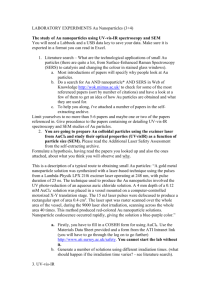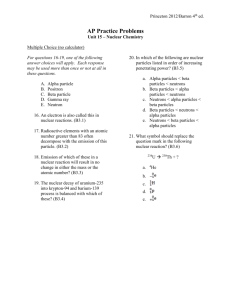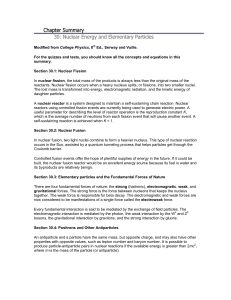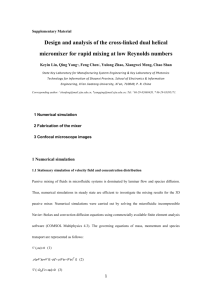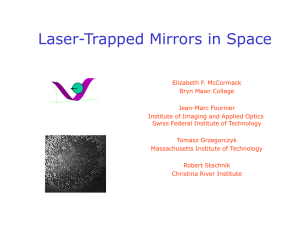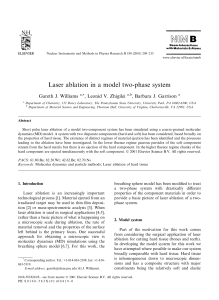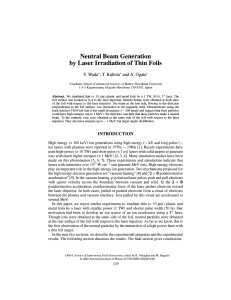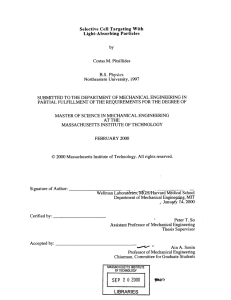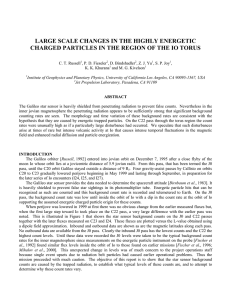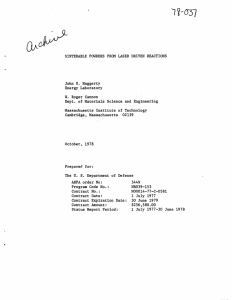Abstract
advertisement
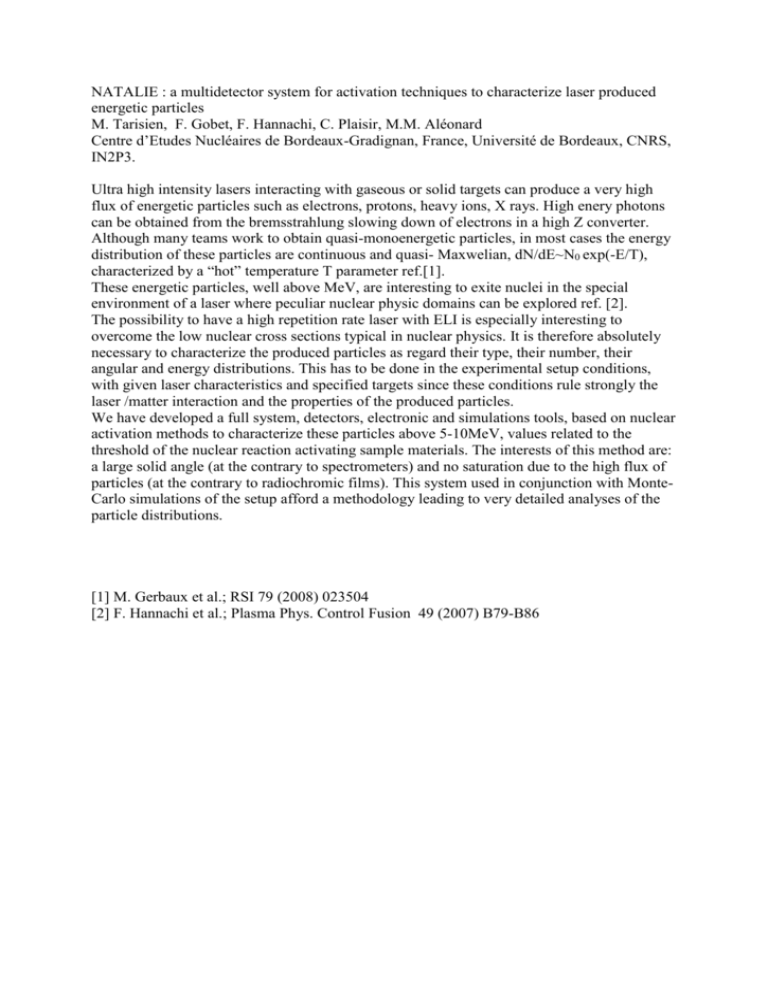
NATALIE : a multidetector system for activation techniques to characterize laser produced energetic particles M. Tarisien, F. Gobet, F. Hannachi, C. Plaisir, M.M. Aléonard Centre d’Etudes Nucléaires de Bordeaux-Gradignan, France, Université de Bordeaux, CNRS, IN2P3. Ultra high intensity lasers interacting with gaseous or solid targets can produce a very high flux of energetic particles such as electrons, protons, heavy ions, X rays. High enery photons can be obtained from the bremsstrahlung slowing down of electrons in a high Z converter. Although many teams work to obtain quasi-monoenergetic particles, in most cases the energy distribution of these particles are continuous and quasi- Maxwelian, dN/dE~N0 exp(-E/T), characterized by a “hot” temperature T parameter ref.[1]. These energetic particles, well above MeV, are interesting to exite nuclei in the special environment of a laser where peculiar nuclear physic domains can be explored ref. [2]. The possibility to have a high repetition rate laser with ELI is especially interesting to overcome the low nuclear cross sections typical in nuclear physics. It is therefore absolutely necessary to characterize the produced particles as regard their type, their number, their angular and energy distributions. This has to be done in the experimental setup conditions, with given laser characteristics and specified targets since these conditions rule strongly the laser /matter interaction and the properties of the produced particles. We have developed a full system, detectors, electronic and simulations tools, based on nuclear activation methods to characterize these particles above 5-10MeV, values related to the threshold of the nuclear reaction activating sample materials. The interests of this method are: a large solid angle (at the contrary to spectrometers) and no saturation due to the high flux of particles (at the contrary to radiochromic films). This system used in conjunction with MonteCarlo simulations of the setup afford a methodology leading to very detailed analyses of the particle distributions. [1] M. Gerbaux et al.; RSI 79 (2008) 023504 [2] F. Hannachi et al.; Plasma Phys. Control Fusion 49 (2007) B79-B86






